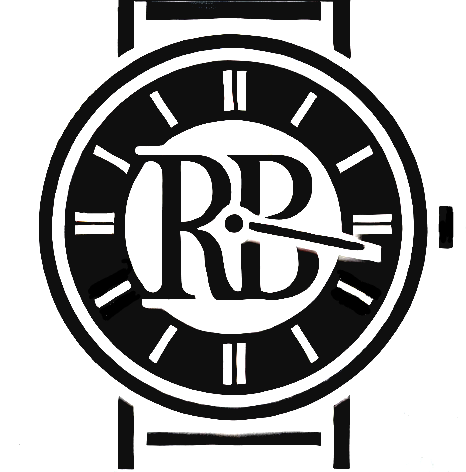Collector’s Guide to Used & Vintage Rolex Watches
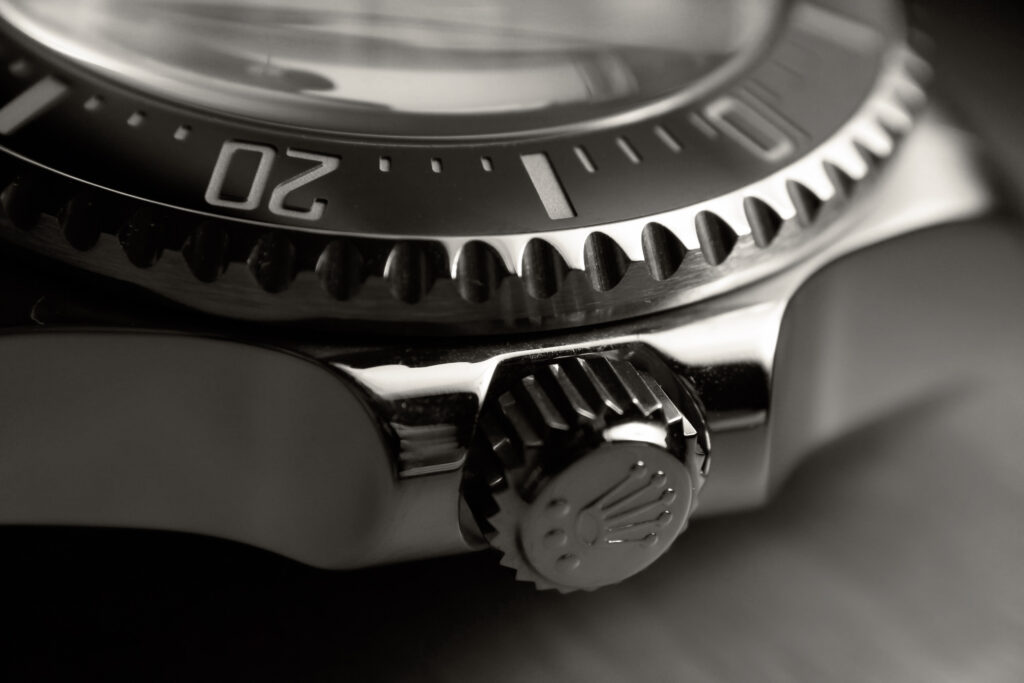
A Collector’s Guide to Vintage & Used Rolex Watches
Explore the most iconic Rolex models: GMT-Master, Submariner, Explorer, Datejust, and Daytona. Learn what to look for, where to buy, and how to collect smart.
- Why Buy Vintage or Used Rolex Watches?
- Why Are Vintage Rolex Watches So Valuable?
- How to Tell the Age and Provenance of Your Rolex Watch
- Overview of the Most Popular Rolex Watches
- Glossary of Rolex Collecting Terms
- Trusted Rolex Resources
1. Why Buy Vintage or Used Rolex Watches?
Vintage and pre-owned Rolex watches offer timeless style, lasting value, and an opportunity to own a piece of time keeping history. Whether you’re an experienced collector or just starting your journey, knowing what to look for can make all the difference.
Benefits of collecting vintage and used Rolex:
- Unique patina and character not found in modern models
- Higher long-term value retention
- Historical significance and craftsmanship
- Often more affordable than new Rolexes
2. Why Are Vintage Rolex Watches So Valuable?
The enduring value of these luxury timepieces comes from a combination of heritage, rarity, craftsmanship, and long-term investment potential. Here’s a deeper look into why collectors are willing to pay a premium for these iconic models:
Historical Significance
Many vintage Rolex models were built with specific professional purposes in mind, and that real-world utility gives them historical weight:
- The Rolex Submariner was developed for divers and became a go-to tool for military and commercial underwater missions.
- The Rolex GMT-Master was created in collaboration with Pan Am for pilots navigating multiple time zones.
- The Explorer and Explorer II were inspired by expeditions to Mount Everest and Arctic caves, respectively.
- Certain Rolex models were even issued to military personnel or government agencies, such as the British MOD, giving them unique provenance and collector interest.
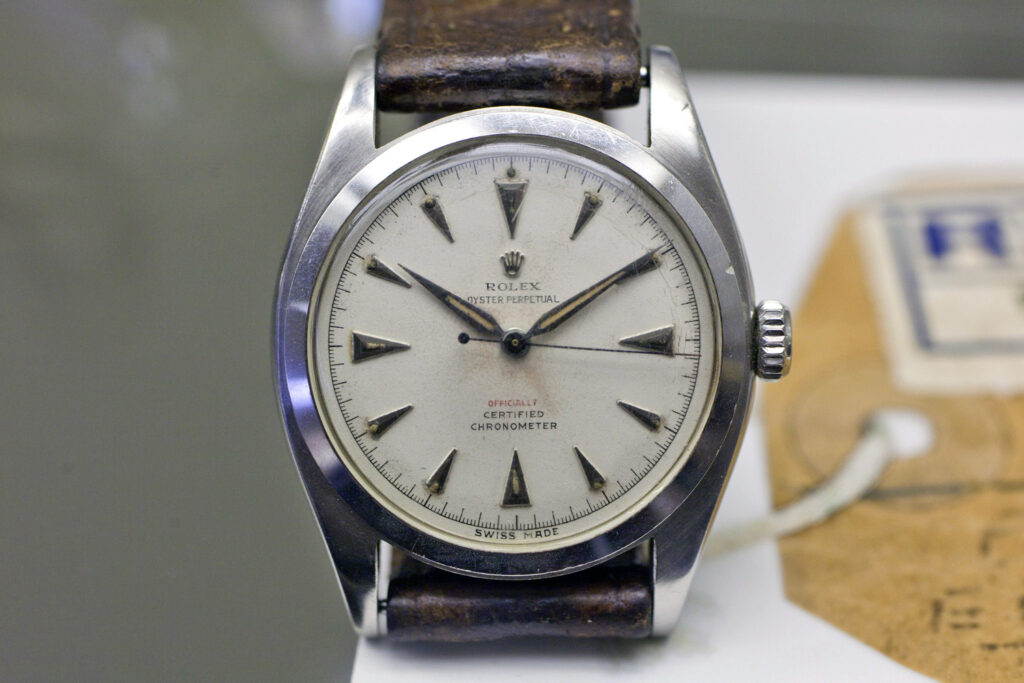
These connections to aviation, diving, exploration, and military service elevate their desirability.
Limited Production Runs & Rare References
Rolex is known for incremental evolution rather than radical change, but some models — or specific reference numbers — were only produced for a short period, making them highly sought-after:
- A model like the Submariner 5513 has subtle variations in dials over time (e.g., gilt, meters first, maxi dial), each with its own niche collector market.
- The “Red Submariner” 1680 with red text is more valuable due to its limited run.
- Oddities and transitional references, like the “Fat Font” bezels or Mark I dials, also command attention.
Collectors love finding these rarities and the stories behind them.
Patina & Aged Features
One of the most appealing aspects of vintage Rolex watches is their unique aging characteristics:
- Tropical dials fade from black to rich brown due to sun exposure and dial chemistry.
- Faded bezels on GMTs and Submariners can turn soft blue, gray, or even pink, creating a one-of-a-kind look.
- Aged lume develops a creamy yellow or orange patina, often called “pumpkin lume,” which is highly sought after.
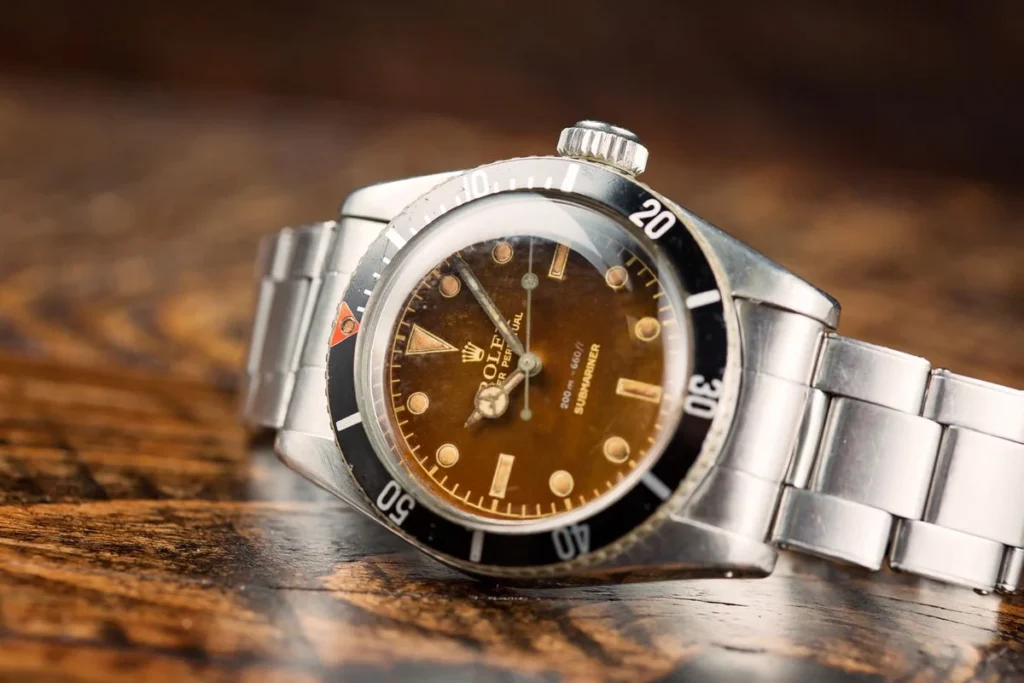
These imperfections are seen as signs of authenticity and individuality — no two vintage Rolex watches age the same.
Investment Potential
Rolex has a long track record of value appreciation, especially in the vintage market:
- Models like the Paul Newman Daytona, once overlooked, now fetch six-figure prices at auction.
- Even lesser-known references have doubled or tripled in value over the last decade.
- Vintage Rolexes are widely viewed as tangible assets, often outperforming traditional investments.
Check out this article on the most expensive Rolex watches in the world!
3. How to Tell the Age and Provenance of Your Rolex Watch
One of the most important steps in evaluating a vintage or used Rolex is determining its age and provenance. Knowing when your Rolex was made and tracing its history not only enhances its collectible value, but also helps confirm its authenticity and originality.
Find the Serial Number and Model Number
The serial number and model (or reference) number are key to dating a Rolex. You can usually find them:
- You can find the Serial number engraved between the lugs at the 6 o’clock position (older models), or on the rehaut (inner bezel) on modern models (post-2005). Serial numbers have been a randomized, 8 digit number since 2012.
- Model/reference number: Engraved between the lugs at the 12 o’clock position.
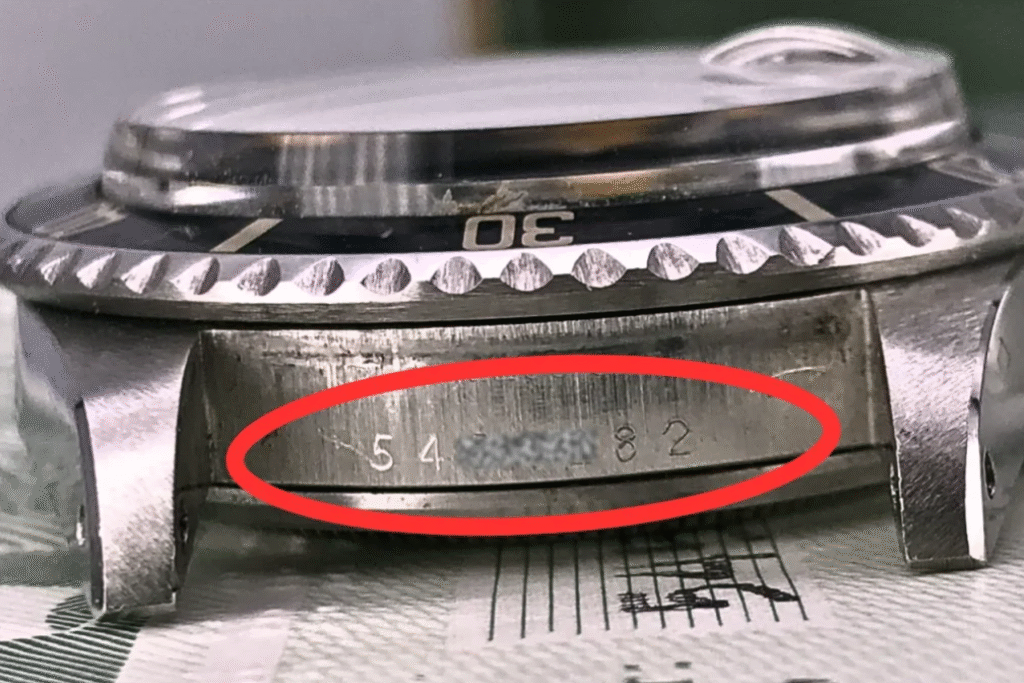
Remove the bracelet carefully to access these numbers, or consult a professional watchmaker if unsure.
Use a Rolex Serial Number Chart
Once you have the serial number, use a Rolex Serial Number Chart to estimate the production year.
- A serial number starting with:
- 1 million likely dates to the 1960s.
- 2 – 5 million likely dates to the 1970s.
- 6 – 9 million likely dates to the 1980s.
- Random serials began around 2012, making dating more difficult on modern Rolexes.
Understanding Provenance
Provenance refers to the ownership and service history of a watch. A Rolex with documented provenance is often more desirable to collectors.
Helpful signs of strong provenance include:
- Original box and papers (warranty card, booklets, tags).
- Service receipts from Rolex or reputable watchmakers.
- A well-documented ownership chain (e.g., passed down in a family, issued by the military).
- Dealer stamp and matching numbers on the warranty certificate.
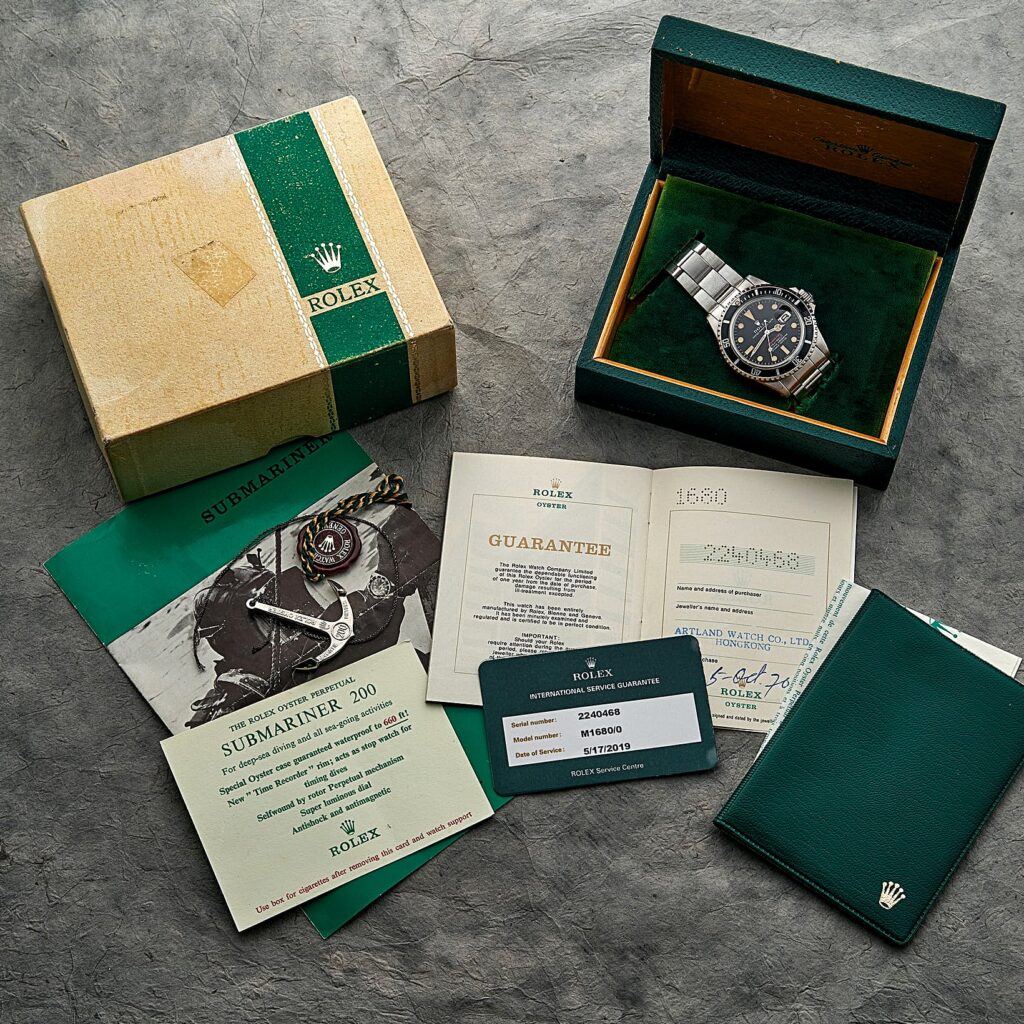
Pro Tips for Verifying Age & Authenticity
- Ensure the dial, bezel, and hands match the reference and era.
- Check for “correct” patina and aging for the model’s age — a 1970s watch should look aged.
- Re-lumed dials, swapped bezels, or polished cases may lower value.
Bonus: Compare with Online Listings
At RolexBidder.com, we link to carefully curated vintage and used Rolex watches on eBay that feature the Authenticity Guarantee. By looking at these trusted listings, you can study the visual details, spot key design features, and gain confidence in identifying genuine Rolex models.
4. Overview of the Most Popular Rolex Watches
Rolex has produced many iconic timepieces over the decades, but five models consistently stand out to collectors and enthusiasts alike. The GMT-Master, Submariner, Explorer, Datejust, and Daytona each offer a unique blend of history, design, and functionality, making them some of the most sought-after watches in the vintage and used market.
⌚ Rolex GMT-Master & GMT-Master II
Originally developed for Pan Am pilots, the GMT-Master lets wearers track multiple time zones. Beloved by collectors for its colorful “Pepsi” and “Batman” bezels.
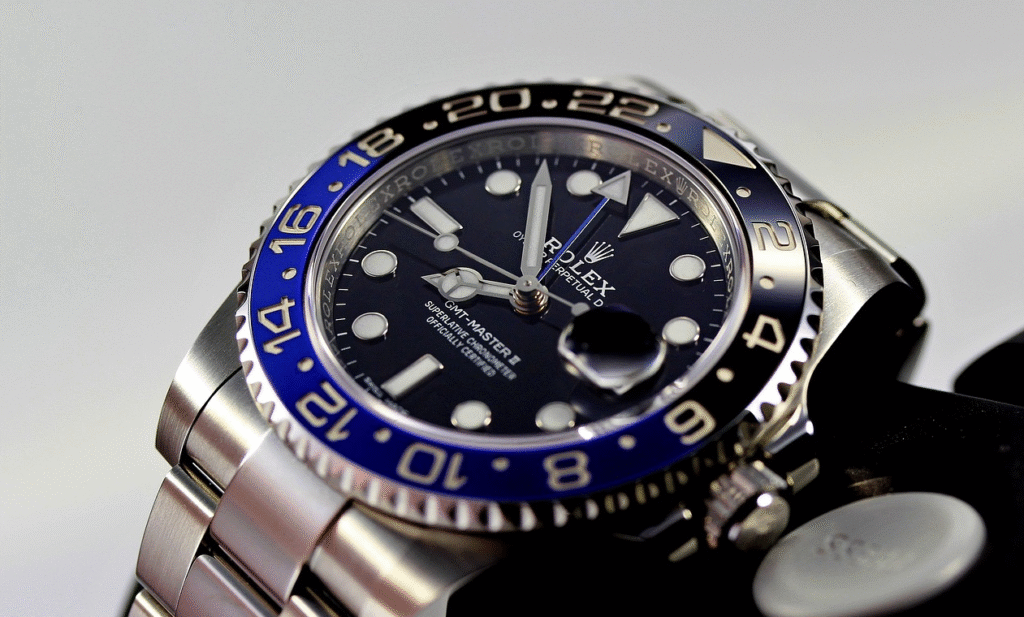
Key Features:
- Dual-time functionality
- Rotatable 24-hour bezel
- Iconic color schemes (Pepsi, Coke, Batman)
- Models: 1675, 16710, 126710BLRO
🔗 Shop for and learn more about the Rolex GMT-Master
🌊 Rolex Submariner
The quintessential dive watch. The Submariner is known for its robust design, waterproof case, and iconic rotating bezel. It’s a pillar of every Rolex collection.
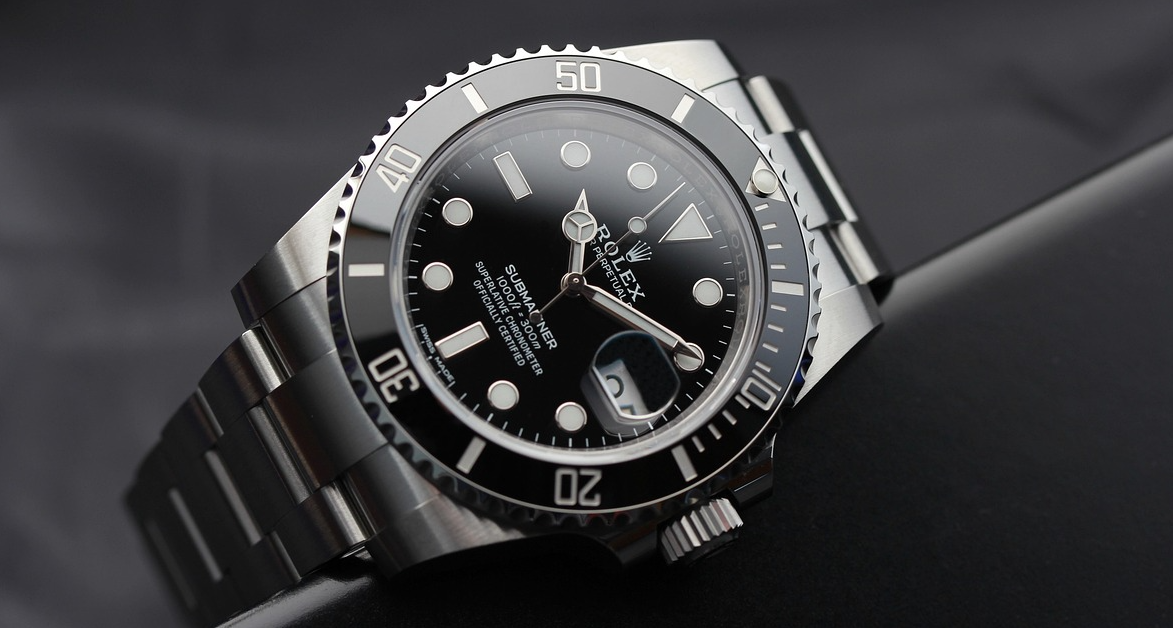
Key Features:
- Waterproof to 300m
- Unidirectional bezel
- Luminescent hour markers
- Models: 5513, 1680, 16610, 14060
🔗 Shop for and learn more about the Rolex Submariner
🏔️ Rolex Explorer & Explorer II
Built for adventurers, the Explorer has accompanied explorers to Everest and beyond. The Explorer II adds a 24-hour hand and fixed bezel—perfect for spelunkers and polar explorers.
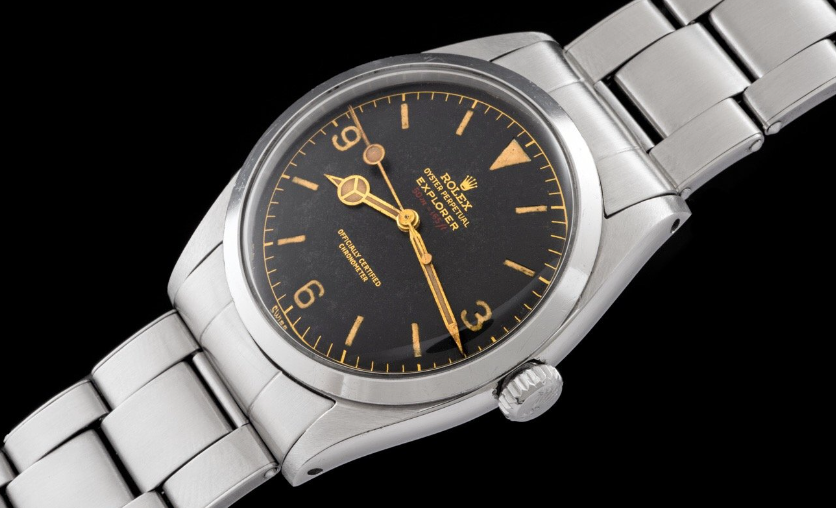
Key Features:
- Rugged stainless steel construction
- Simple and highly legible dial
- Explorer II adds GMT hand
- Models: 1016, 14270, 16570
🔗 Shop for and learn more about the Rolex Explorer
📆 Rolex Datejust
One of the most versatile Rolex models, the Datejust blends dress and casual appeal. First introduced in 1945, it was the first wristwatch to feature an automatically changing date.
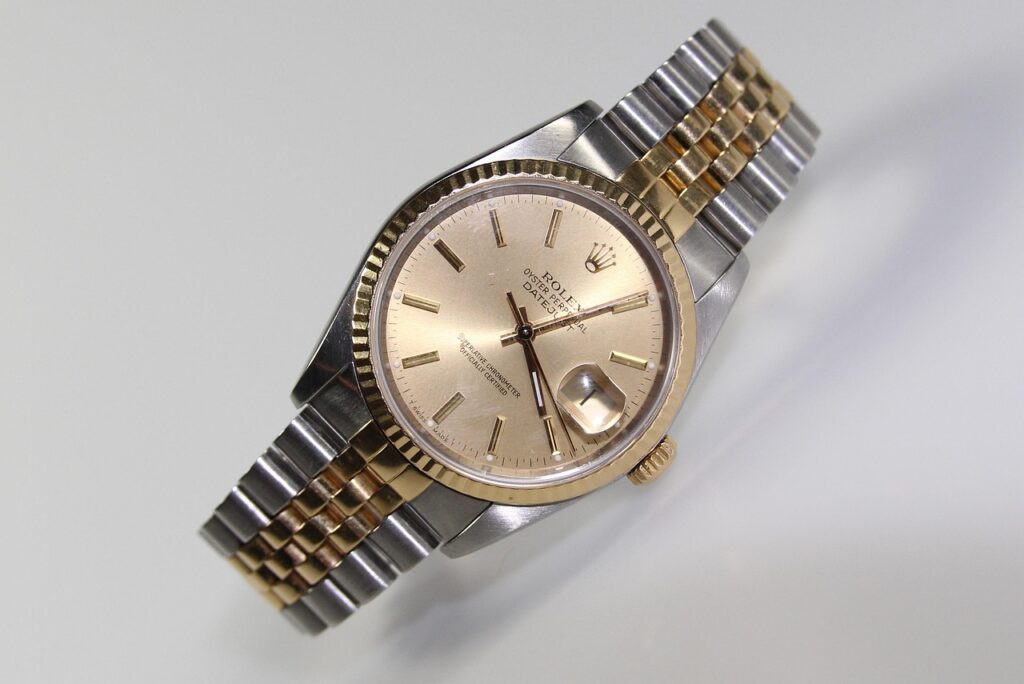
Key Features:
- Cyclops lens over date
- Oyster or Jubilee bracelet options
- Wide range of sizes and dials
- Models: 1601, 16014, 16234, 116234
🔗 Shop for and learn more about the Rolex Datejust
🏁 Rolex Daytona
The Daytona is the ultimate racing chronograph, made famous by Paul Newman. With its precise stopwatch function and high-beat movement, it’s among the most sought-after Rolex models.
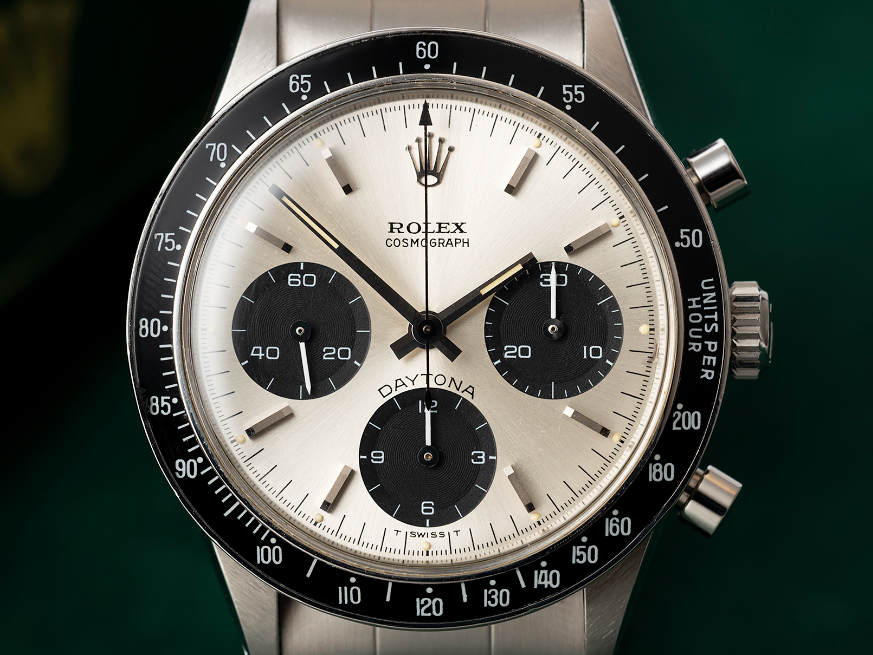
Key Features:
- Chronograph complication
- Tachymeter bezel
- High collector demand, especially “Paul Newman” dials
- Models: 6239, 6263, 16520, 116500LN
🔗 Shop for and learn more about the Rolex Daytona
5. Glossary of Rolex Collecting Terms
Acrylic Crystal – A type of plastic crystal used in vintage Rolex watches (before sapphire). Known for its warm vintage look and ease of polishing.
Aftermarket – Any part (dial, bezel, bracelet, etc.) that was not produced or installed by Rolex. These can affect value and collectibility.
Bezel – The ring surrounding the dial. On many Rolex models (like the Submariner or GMT-Master), the bezel is rotatable and serves a functional purpose.
Caliber – The specific model or reference number of a Rolex movement. For example, the Caliber 3135 is a widely used automatic movement.
Caseback – The back of the watch case. Vintage Rolexes usually have a screw-down caseback, and some include date codes.
Crown – The knob used to wind the watch and set the time. Rolex’s “Twinlock” and “Triplock” crowns are known for their water resistance.
Cyclops – The small magnification lens over the date window on many Rolex models, designed to make the date easier to read.
Dial – The face of the watch. Vintage dials may show patina, spidering, or tropical fading, which can increase uniqueness and value.
End Links – The small pieces that connect the bracelet to the watch case. Correct end links are important for authenticity and fit.
Faded Bezel – A bezel insert that has changed color due to age and exposure. Desirable on vintage models like the GMT-Master.
Factory Original (OEM) – Parts that were originally produced and installed by Rolex at the time of manufacture. Highly preferred by collectors.
Hacking Seconds – A movement feature that stops the second hand when the crown is pulled out for precise time setting.
Lume – The luminous material on the dial and hands for visibility in the dark. Vintage lume types include tritium and radium.
Maxi Dial – A dial with larger hour markers. Found on some vintage and modern Rolex sport models.
Patina – Natural aging on dials, lume, or bezels that gives a vintage Rolex its character. Often highly desirable.
Plexiglass – Another term for acrylic crystal, used in older Rolex models like early Submariners and Daytonas.
Reference Number – The model number of a Rolex watch. For example, “1675” refers to a vintage GMT-Master.
Rehaut – The inner ring between the dial and crystal. Modern Rolexes often have an engraved rehaut with the serial number.
Serial Number – A unique number that helps identify the age and provenance of a Rolex. Located between the lugs or on the rehaut.
Service Dial – A replacement dial installed during servicing, not the original factory dial. May lower collectibility in some cases.
Swiss Made – Text at the bottom of the dial indicating origin. The lume type can sometimes be identified by what is printed (e.g., “T SWISS T”).
Tritium – A lume material used from the 1960s to the 1990s. Identified by the “T” on the dial. It ages and fades attractively over time.
Tropical Dial – A dial that has faded from black to brown due to UV exposure. Highly sought after by collectors.
Unpolished Case – A case that retains its original shape and lines. Polishing can reduce value, so many collectors seek unpolished examples.
Vintage – Generally refers to watches over 20–30 years old. Vintage Rolex watches are known for their unique character and collectibility.
Waffle Dial – A textured dial often found in early Datejust models. Considered rare and collectible.
Collecting Tips for Beginners
- ✅ Verify authenticity – Use sellers with solid feedback or third-party authentication services.
- 📅 Know your reference numbers – Key to understanding year and movement.
- 🔍 Check condition carefully – Original parts, dial patina, and bracelet stretch affect value.
- 🧾 Save paperwork – Boxes, receipts, and service records add to resale value.
- 📦 Store properly – Use a watch roll or safe box to avoid moisture or impact damage.
6. Trusted Rolex Resources
This guide is just the beginning; there’s a vast amount of knowledge to be learned about the world of Rolex watches. Below, you’ll find a curated list of trusted websites, tools, and communities that offer deeper insights into vintage and used Rolex models. Whether you’re researching your first purchase or expanding your collection, these resources can help you learn, compare, and collect with confidence.
Rolex Research & Reference Sites
- History of the Rolex Watch – Rolex.com
An interesting timeline and overview of the brand’s rich history, highlighting key innovations, milestones, and iconic timepieces. - Bob’s Watches – Rolex Serial Number Lookup
A reliable tool to help date your Rolex watch based on the serial number. - Hodinkee – Rolex Articles
Editorial content on rare and modern Rolex watches with historical insights. - Chrono24 Rolex Guide
Global marketplace with in-depth guides, price trends, and watch comparisons. - WatchCharts
Tracks the market value of Rolex watches with graphs, trends, and historical data.
Authentication & Valuation
- eBay Authenticity Guarantee – Rolex
Shop Rolex watches backed by eBay’s third-party authentication program. - Trilogy Jewelers – How to Authenticate a Rolex Watch
Tips for identifying authentic vintage Rolex models and avoiding counterfeits. - Toolwatch App
A free app to check the accuracy of your mechanical Rolex by tracking timekeeping.
Communities & Collector Groups
- Reddit r/rolex
Community of Rolex enthusiasts sharing new purchases, history, and advice. - WatchUSeek Rolex Forum
A large international watch forum with a Rolex-dedicated section. - Tapatalk.com – Vintage Rolex Forum
A highly active community forum where collectors share information and photos.
Books Worth Owning
- “The Rolex Report” by John E. Brozek
Comprehensive guide to Rolex watches with info on spotting fakes. - “Rolex: History, Icons and Record-Breaking Models” by Mara Cappelletti
A beautifully photographed coffee-table book covering Rolex’s legacy.
Happy Collecting!
RolexBidder.com is your resource for buying vintage and used Rolex watches with confidence. Whether you’re interested in a sleek classic like the Datejust or a tool watch like the Submariner, we aim to help you make informed choices and find the best deals online.
